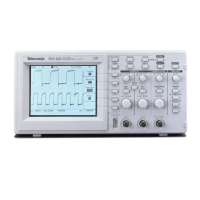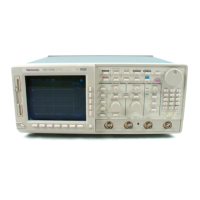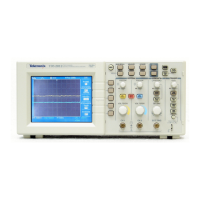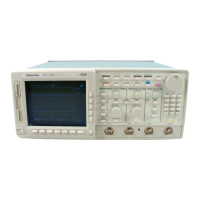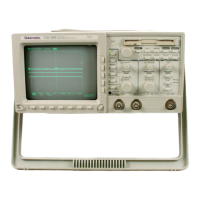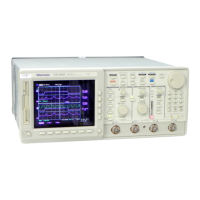TDS 420A, TDS 430A, TDS 460A & TDS 510A User Manual
3–27
Fast Fourier Transforms (Optional)
Advanced DSP Math, provides the Fast Fourier Transform (FFT). (For more
information see Waveform Differentiation, on page 3–131, Waveform Integra-
tion, on page 3–135, and Waveform Math, on page 3–139.) The FFT allows you
to transform a waveform from a display of its amplitude against time to one that
plots the amplitudes of the various discrete frequencies the waveform contains.
You can also display the phase shifts of those frequencies. Use FFT math
waveforms in the following applications:
Testing impulse response of filters and systems
Measuring harmonic content and distortion in systems
Characterizing the frequency content of DC power supplies
Analyzing vibration
Analyzing harmonics in 50 and 60 cycle lines
Identifying noise sources in digital logic circuits
Description
The FFT computes and displays the frequency content of a waveform you
acquire as an FFT math waveform. The resulting waveform is a display of the
magnitude or phase angle of the various frequencies the waveform contains with
respect to those frequencies. For example, Figure 3–15 shows the non-trans-
formed impulse response of a system in channel 2 at the top of the screen. The
FFT-transformed magnitude and phase appear in the two math waveforms below
the impulse.
The horizontal scale for FFT math waveforms is always expressed in frequency
per division with the beginning (left-most point) of the waveform representing
zero frequency (DC).
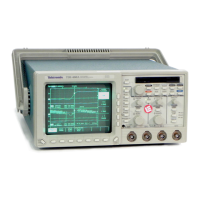
